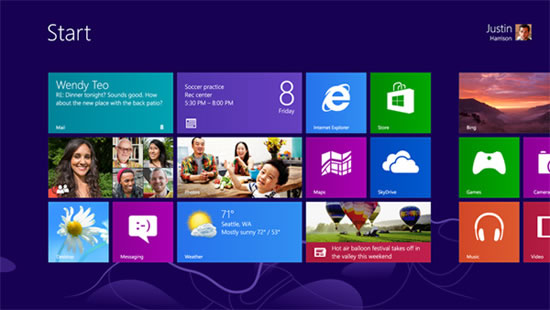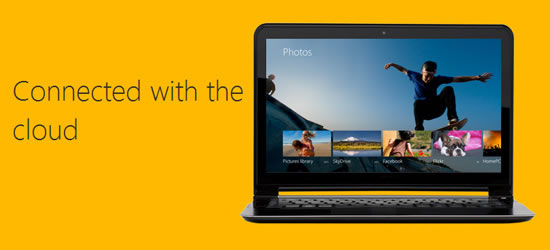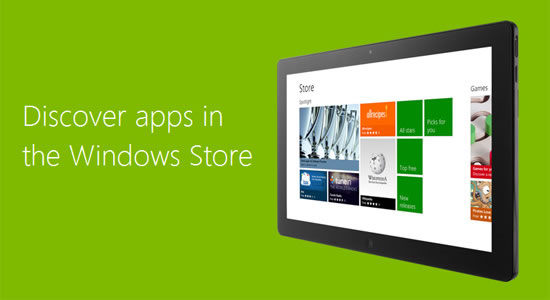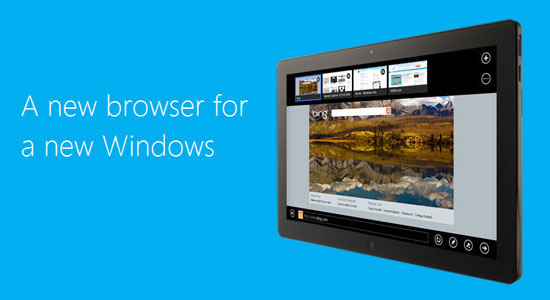Our Aim
To provide you with an overview on New And existing technologies, hopefully helping you understand the changes in the technology. Together with the overviews we hope to bring topical issues to light from a series of independent reviewers saving you the time And hassle of fact finding over the web.
We will over time provide you with quality content which you can browse and subscribe to at your leisure.
TekSpek 's

Windows 8
Date issued:
Three years and four days after the record-breaking launch of Windows 7, Microsoft will release the next major iteration of its desktop operating system in the form of Windows 8.
Scheduled to launch globally on October 26, 2012, Windows 8 aims to "reimagine and reinvent" the way in which we use our PCs and in this guide we'll get you started on everything you need to know about Microsoft's revamped OS.
The Different Editions of Windows 8
Microsoft has made a concerted effort to streamline the number of product editions available to the consumer, and as a result of that effort Windows 8 - for both 32- and 64-bit PCs - will be available in two primary flavours; Windows 8 and Windows 8 Pro.
Both variations will be available to purchase in stores, and Microsoft openly states that "for many consumers, Windows 8 will be the right choice." The standard version is for all intents and purposes the equivalent of Windows 7 Home Premium; it features all of the basic Windows 8 features - including a new Start screen, a dedicated app store, Internet Explorer 10 and more - and is aimed at the home user.
Windows 8 Pro, meanwhile, supersedes both Windows 7 Professional and Windows 7 Ultimate. Designed for enthusiasts and business users, it expands on the Windows 8 feature set by including support for the encrypting file system, virtualisation, group policy and Windows Server domain connectivity.
Somewhat surprisingly, Microsoft has also opted not to include Windows Media Center as a standard component of Windows 8. Citing the "cost of decoder licensing and the importance of a straight forward edition plan," Microsoft has instead opted to make Windows Media Center available as an optional paid extra, with users able to purchase the upgrade via the Add Features to Windows 8 control panel. Note, however, that Windows Media Player will continue to be offered for free in all editions of Windows 8, albeit without built-in DVD playback support.
The two core editions of Windows 8 for 32- or 64-bit PCs are straightforward enough, but there's a third edition that you'll be hearing a lot more about dubbed Windows RT. Set to be introduced as the newest member of the Windows product line, Windows RT is a version of Windows 8 designed exclusively to run on devices with ARM processors, such as tablet PCs. Named after the Windows Runtime (WinRT) development platform, Windows RT will only be available pre-installed on ARM-based devices and will not run software designed for x86 or x64 architecture.
In keeping with recent Windows releases, Microsoft will also offer an Enterprise edition of Windows 8 that provides access to the company's Software Assurance program.
Upgrade Options
Choosing the right version of Windows 8 is an easy task, but it's worth keeping in mind the various upgrade paths. As expected, it isn't possible to carry out an in-place upgrade from a 32-bit version of Windows 7 to a 64-bit version of Windows 8; the software - new and old - needs to be like-for-like in terms of architecture. With that in mind, it's also impossible to upgrade from any edition of Windows 7 to the ARM-based Windows RT.
Windows edition |
Windows RT Upgrade |
Windows 8 Upgrade |
Windows 8 Pro Upgrade |
|---|---|---|---|
Windows 7 Starter |
Not Available |
Complete |
Complete |
Windows 7 Home Basic |
|||
Windows 7 Home Premium |
|||
Windows 7 Professional |
Not Available |
||
Windows 7 Ultimate |
|||
Windows Vista (with SP1) |
Partial |
||
Windows XP (with SP3) |
Minimal |
||
| Complete: Upgrade will keep system settings, personal files and applications Partial: Upgrade will keep system settings and personal files Minimal: Upgrade will only keep personal files |
|||
The above table breaks down a wide array of upgrade paths and shows that every Windows 7 user will have at least one option for upgrading to Windows 8 while keeping files, settings and applications intact.
New Features
Microsoft has provided a simpler range of product editions and a streamlined upgrade path, but the big changes lie within the software itself, where a reimagined interface transforms the user experience and a wide range of new features aim to speed up everyday tasks.
The Start Screen
At the heart of the Windows 8 experience is a new Start screen that forms the basis of a revamped user interface codenamed Metro. Introduced to effectively replace the traditional Start menu, the new Start screen is similar in appearance to the Windows Phone interface and acts as the first screen displayed on startup.

Accessed via the Windows key or a hot corner in the bottom left, the Start screen masks the desktop with an array of live tiles designed to display "all of the information you care about in one place." The tiles change and update in real time to reflect updates such as new email or social alerts, and the interface can be altered by the user - tiles can be added, removed, relocated or resized at the touch of a few buttons. Of course, the desktop you're familiar with is also available, and one click of the desktop tile takes you straight to it.
The Start screen marks a big shift in the Windows user interface, and is designed to span across multiple devices. Whether you're a desktop consumer with a keyboard and mouse or a tablet user with a touchscreen interface, Windows 8 is designed to feel natural and intuitive to use.
Cloud Connected
For the first time, Windows users will be able to sign into their computers using a web-connected Microsoft account. Linking multiple devices to one account will allow users to carry their preferences between multiple devices; simply sign in with your online account and your Windows 8 device will automatically load your personalised desktop, background and settings.

And the usefulness of the cloud doesn't stop with personalisation. With built-in support for Microsoft SkyDrive, Windows 8 allows users to store files and information in the cloud, ensuring that your apps, games, music, photos and files are available on all of your Windows devices.
Integrated Apps and the Windows Store
Windows 8 is designed to get you up and running quickly, and to help you on your way a range of complimentary apps are installed as standard. These include Mail, Calendar, SkyDrive, Photos, People and Xbox.
The Mail app allows you to see all your email in one place, and you can even pin individual accounts to the Start screen to see new emails as and when they arrive. The Photos app will pull pictures from all of your connected accounts - allowing you to see images from your PC as well as your Flickr and Facebook accounts in one user-friendly app - and a comprehensive range of multimedia apps are included too. Microsoft's Music app offers access to over 15 million songs, and a dedicated Xbox app provides a cross-platform gaming experience complete with avatar and gamerscore points!

And the default apps are just the tip of the iceberg. For the first time ever, Windows will come equipped with its own integrated store, from which users will be able to buy and rate all of the software they need. And as each app is screened and checked for viruses before appearing on the Windows Store, you can rest assured in the knowledge that you'll be making a quality purchase.
Internet Explorer 10
In addition to a wide range of new apps, Windows 8 will signal the debut of Microsoft's latest web browser, Internet Explorer 10. Built to "put the focus on the web," IE10 features an edge-to-edge interface that uses your entire display to deliver a compelling web-browsing experience.

IE10 promises to deliver fast and fluid performance by making use of hardware acceleration, and safety remains a priority with Microsoft carrying over many existing safety nets such as the SmartScreen Filter. IE10 also introduces support for the HTML5 and CSS3 standards, and the browser will feature in Windows 8 in two unique ways; a touch-optimised app will be available with no support for plug-ins, as will a traditional desktop application that does support third-party plug-ins.
Other Enhancements
- Faster Boot Times
Windows 8 will support multiple CPU cores during startup and uses a revamped boot sequence that allows the system kernel to be saved to the hard disk in a state of hibernation, ready for a quick reload on startup. These enhancements, among others, will make Windows 8 startup times noticeably faster than Windows 7. - Native USB 3.0
Windows 8 will be the first Microsoft operating system to offer native support for the USB 3.0 standard, delivering greater performance and improved power management. - New Task Manager
Starting to think that Microsoft has left no stone unturned? You might be right, as even the Task Manager has been given a makeover! In Windows 8, it offers a streamlined list of running apps by default, but with one click power users are given access to a Task Manager that provides far more info - including a granular look at CPU, memory, disk and network activity and a Startup tab that lists boot applications. - Improved Multi-Monitor Support
Like to use more than one monitor? Then you'll feel right at home in Windows 8 as Microsoft has added the ability to display the taskbar on multiple displays, as well as an option to span wallpaper or set independent wallpapers for each monitor. - DirectX 11.1
The latest version of the DirectX application programming interface, version 11.1, will also be featured in Windows 8 and gives developers the ability to create a new wave of breathtaking games through the use of larger shader buffers, new audio and input APIs, and built-in support for stereoscopic 3D.
Summary
In many ways, Windows 8 is Microsoft's most daring operating system to date. It attempts to unify the desktop, laptop and tablet experience with a reimagined interface, and though it is built upon the rock-solid foundation of Windows 7, it offers a fresh user experience that will signal the arrival of a new wave of next-generation devices.
Windows 8 will be available to purchase from Scan Computers beginning Friday, October 26, 2012.